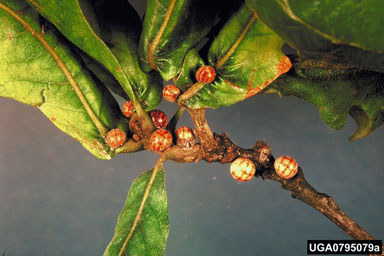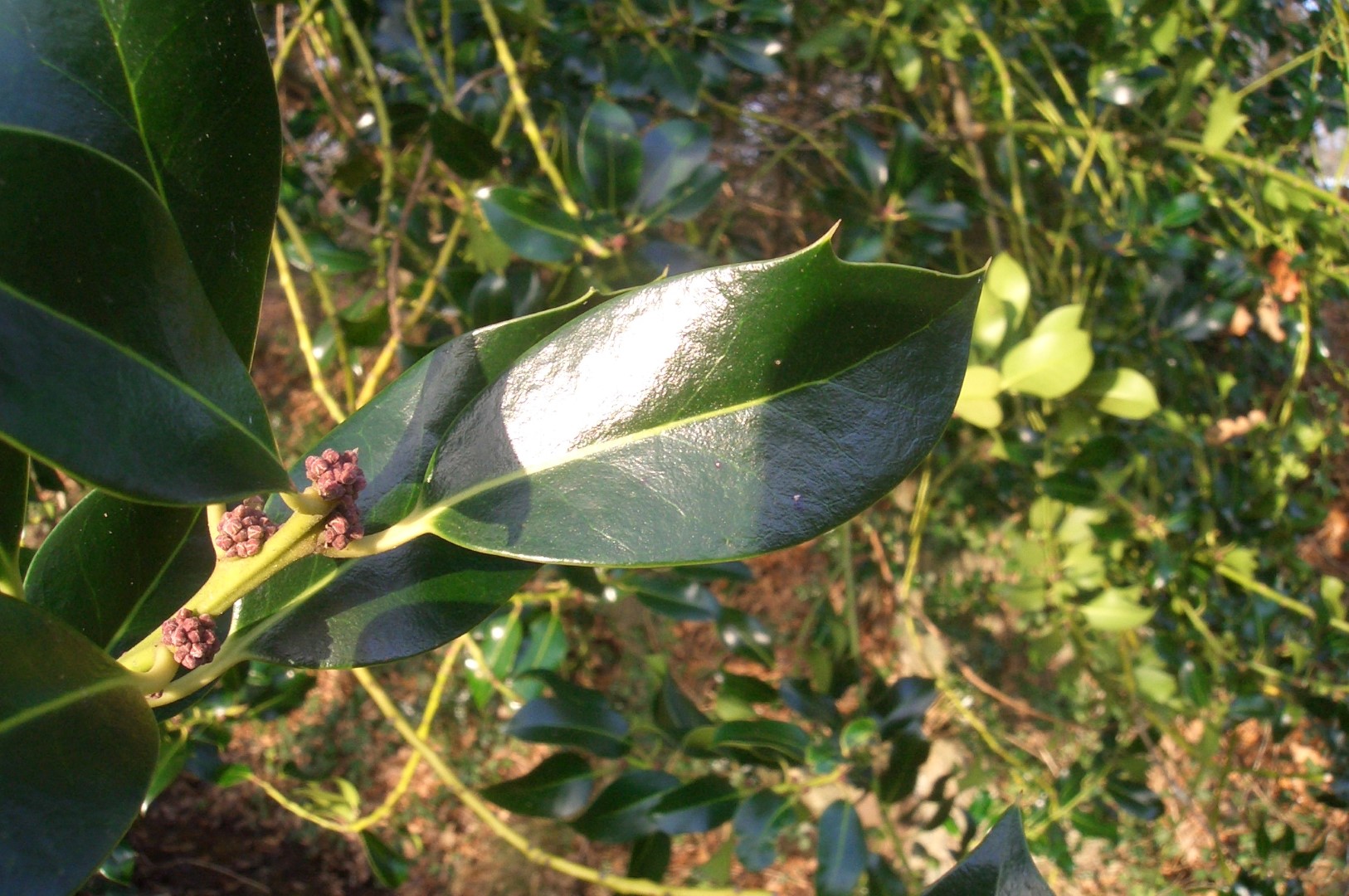The prickly question of oak leaves!
By Ruth D’Alessandro, The Wildlife Gardener The Wildlife Gardener enjoyed reading the Ranger’s holly post, and now has a new science hero: Professor Obeso. You just know you’d have a decent lunch with him. For once, I have nothing to add to this treatise on ‘spinescence’ other than to share with readers the following picture of an evergreen shrub taken at Wakehurst Place:

What is this? Dinky holly for decking dolls’ house halls? That finger (and unscrubbed nail) belongs to 7-year-old Junior Wildlife Gardener no. 1, so you can see the leaves are really quite small. JWG1 said she thought it was a type of holly. I hurriedly agreed, so we went in search of a label saying Ilex something. Instead, it said Quercus coccifera. Quercus? That’s an oak. It is indeed an oak: the Kermes Oak, native to the Western Mediterranean, from Morocco to Greece. The Quercus baton is then picked up by the Palestine Oak (Quercus calliprino), a close relative, which takes it into the Eastern Mediterranean across the Middle East from Algeria to Turkey. The Kermes oak produces acorns in spinescent cups (unfortunately we were there at the wrong time to see these), but there is something even more interesting about this species.
The dried bodies of Kermes insects were used to make red dye. Aha! Cochineal! Well, no actually. Cochineals (Dactylopius spp.) give cochineal, also called carmine. Kermes insects give crimson. Crimson was a much earlier dye, used in burial shrouds by the Anglo-Scandinavian inhabitants of Northern England around 866. The new-fangled carmine, discovered during the conquest of Mexico, appeared on the scene in 1549. Carmine superseded crimson, as it took ten times fewer cochineals than Kermes insects to produce the same amount of acceptable red dye. That’s a lot less insect to find and crush.

From the simple act of going to look at some mini holly, the world of medieval dye-stuffs opened up. So when Stephen Fry asks on QI: what is the red dye extracted from the Kermes insect? not only can you answer correctly ‘not cochineal’, but you can tell him the insect lives on an oak that looks like a holly.
- Spurn Spawn! - 26th February, 2014
- Bluebells on wheels: axles of evil? - 2nd February, 2011
- Raising the ba: Wildlife and the Ancient Egyptian Book of the Dead - 8th January, 2011


can holly as we can it in ireland be picked off the side of the road if on a tree ,can i be stopped from picking it ,i make holly wreaths for xmas thanks .
I’m not sure about the law in Ireland. In England and Wales you can pick it for your own personal use, but not to sell.
Can i see what it looks like when it’s young and still unattached to the bark?
Looking up medieval dyes for child’s homework and find out about the Kermes Oak too!
An oak … that’s interesting. I googled some photos, and yeah … it looks like it fits some Quercus images I found. A few photos looks different, but most had the spines. I just learned what cork oak looks like a few years ago. So many plants to learn.
The label on it was Quercus coccifera – the Kermes oak. I trust the sagely botanists of Kew at Wakehurst to get it right.
Is that an Osmanthus?
Or a Holly?